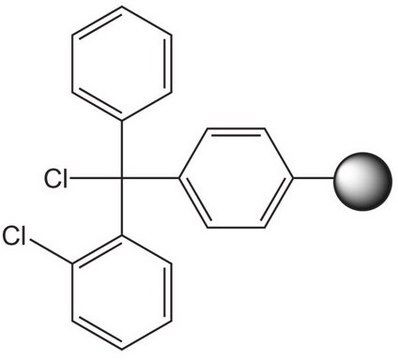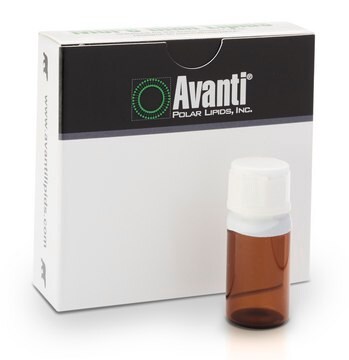QBD10932
m-dPEG®48-MAL
>95% (HPLC)
Synonym(s):
m-PEG48-MAL, mPEG-maleimide, mPEG2000-maleimide, mPEG48-maleimide
Sign Into View Organizational & Contract Pricing
All Photos(1)
About This Item
Empirical Formula (Hill Notation):
C104H202N2O51
Molecular Weight:
2296.70
MDL number:
UNSPSC Code:
12352200
Recommended Products
Assay
>95% (HPLC)
form
solid or viscous liquid
reaction suitability
reaction type: Pegylations
polymer architecture
shape: linear
functionality: monofunctional
shipped in
ambient
storage temp.
−20°C
Features and Benefits
m-dPEG48-MAL is a thiol-reactive, monodispersed PEGylation reagent used for surface and biomolecule modification. One end of the PEG molecule is methyl-terminated. The opposite end possesses a 3-maleimido propanoic acid functional group that connects to the PEG spacer via an amide bond. The maleimide moiety reacts with sulfhydryl groups by the thiol-Michael addition reaction. The single molecular weight, discrete-length PEG (dPEG) chain is 152 atoms (178.6 Å) long, including the reactive site on the maleimide ring. The dPEG48 is a monodisperse equivalent of the polymeric PEG2000.
Legal Information
Products Protected under U.S. Patent #s 7,888,536 & 8,637,711 and European Patent #s 1,594,440 & 2,750,681
dPEG is a registered trademark of Quanta BioDesign
Storage Class Code
11 - Combustible Solids
WGK
WGK 3
Flash Point(F)
Not applicable
Flash Point(C)
Not applicable
Certificates of Analysis (COA)
Search for Certificates of Analysis (COA) by entering the products Lot/Batch Number. Lot and Batch Numbers can be found on a product’s label following the words ‘Lot’ or ‘Batch’.
Already Own This Product?
Find documentation for the products that you have recently purchased in the Document Library.
Nicholas M Molino et al.
Biomacromolecules, 13(4), 974-981 (2012-03-16)
Self-assembling protein nanocapsules can be engineered for various bionanotechnology applications. Using the dodecahedral scaffold of the E2 subunit from pyruvate dehydrogenase, we introduced non-native surface cysteines for site-directed functionalization. The modified nanoparticle's structural, assembly, and thermostability properties were comparable to
Our team of scientists has experience in all areas of research including Life Science, Material Science, Chemical Synthesis, Chromatography, Analytical and many others.
Contact Technical Service

![O-[N-(3-Maleimidopropionyl)aminoethyl]-O′-[3-(N-succinimidyloxy)-3-oxopropyl]heptacosaethylene glycol ≥90% (oligomer purity)](/deepweb/assets/sigmaaldrich/product/structures/367/864/1c31a65f-501f-4464-8bb3-edff0d131a12/640/1c31a65f-501f-4464-8bb3-edff0d131a12.png)





